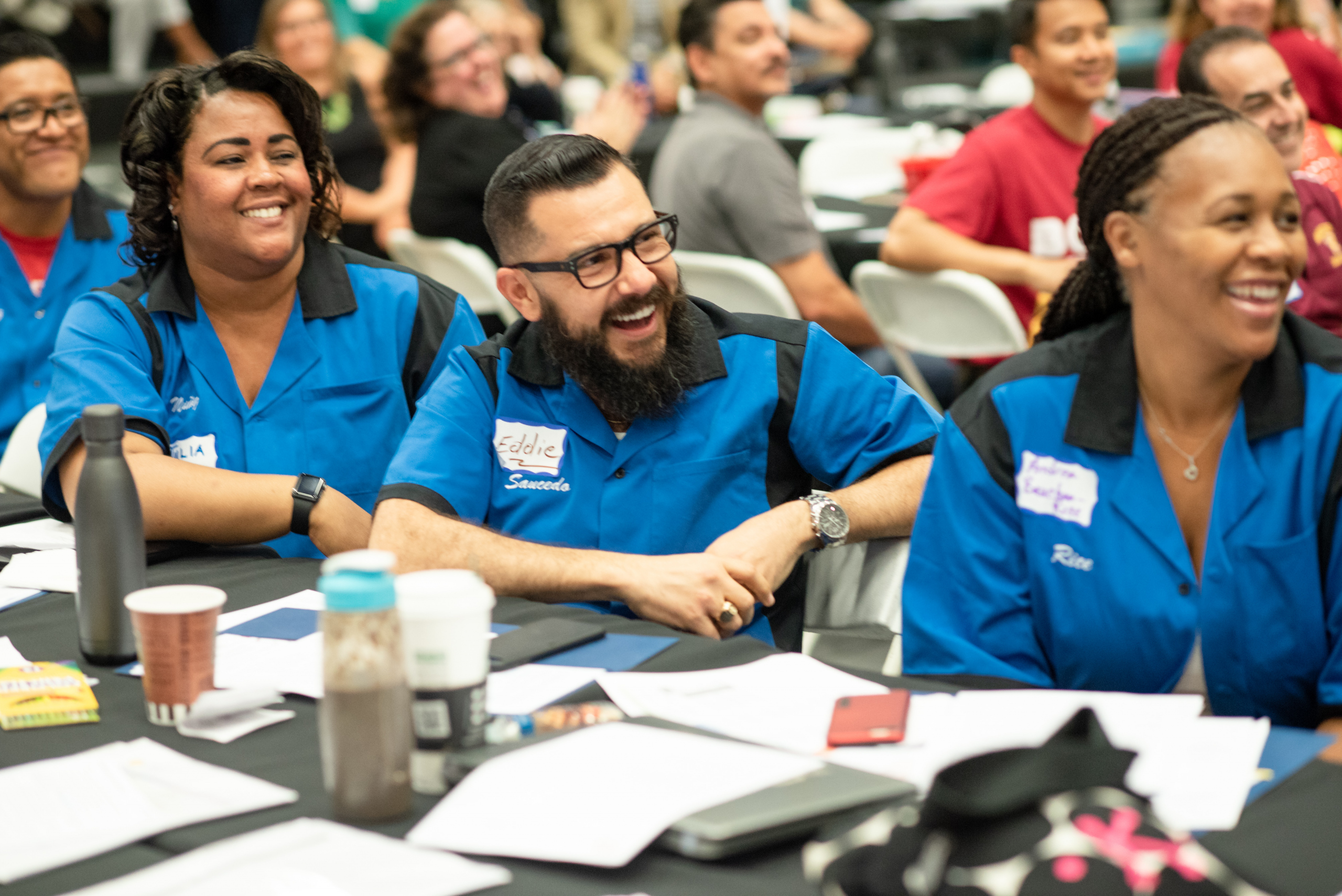
Talent
inside our Practice
The research is clear: school leaders and teachers are game-changers in the lives of their students.
Unfortunately, the recruitment, ongoing development, and retention of high-quality school leaders and teachers are issues that persist in urban school systems. Estimates vary, but approximately 50% of new principals transfer from their schools after three years. In schools serving high-poverty communities, that figure is often worse, with only one quarter of new principals in these schools making it to the five-year mark.
In Los Angeles, as in most public school systems across the country, there are few incentives or supports to ensure that schools serving students with the greatest needs have an equal opportunity to attract and retain the most highly qualified and experienced educators. Many high-need schools struggle to attract and retain qualified educators, frequently leading schools to hire in circumstances when they only have one or two applicants for a position, or have to accept a must-place assignment from the District. The result is that highest-need schools are much less likely to hire and retain qualified teachers who are a good fit for the students they serve.
Because we know that the quality of school leaders and teachers is a critical lever to improve student outcomes, we dedicate significant resources to the strategic recruitment, development, and retention of the most qualified and well-matched talent for our schools.

Principal recruitment, selection, and retention
The Partnership is committed to hiring highly effective, transformational leaders for each of our schools.
We do this through a principal selection process intentionally designed to identify a leader who will dramatically accelerate student performance by developing systems and structures that support student learning and staff growth. The Partnership works to hire diverse candidates representing all races, backgrounds, ethnicities, genders, and religious affiliations.
Principal selection in the Partnership network is guided by three key principles. Our process is:
- Collaborative – Hiring committees include all stakeholders (certificated staff, classified staff, families, district staff, and Partnership staff)
- Rigorous – Candidates are expected to demonstrate their skills in a variety of ways throughout the process, including formal interviews and a candidate exercise
- Rooted in school and community needs – Stakeholder feedback gathered at the start of the process drives the hiring committee’s decisions.
What Sets the Partnership Approach Apart
A key autonomy in our MOU with LA Unified that facilitates our talent and school leadership work is the flexibility to recruit, select, and manage school leaders. We use a rigorous selection process to identify leaders with proven success, including recruiting from a wide pool as well as promising candidates from within our network of schools, many of whom previously held leadership positions at their sites through our Teacher Leader Pathways.
Teacher recruitment, selection, and retention

“The Partnership provides a variety of supports around staffing my school. By working to expand the pool of candidates interested in my campus, my team and I have a greater chance of finding teachers who are the best fit for our school. The Talent Team is able to pull down barriers that might hinder us from being able to hire teachers we need.”Alex KimPrincipal, Edwin Markham Middle School
Teacher recruitment and retention in high-need schools is a national challenge and in LA Unified, teacher hiring is done through a decentralized approach in which schools compete each hiring season to fill teacher vacancies.
In times of the school year when candidates are scarce, or in hard-to-staff subject areas such as math, science, and special education, under-resourced schools like ours struggle to compete with schools with greater resources whose students are more likely to start the year already meeting grade-level expectations. Although hiring rules are equal, hiring outcomes are not, and high-need schools must sometimes accept whichever candidate is assigned to them. We believe that a high-quality teaching staff is a critical lever for school success. We know that the bigger the pool of candidates to choose from, the more likely a school is to find a successful candidate who will accelerate outcomes for students.
Our Talent team includes three dedicated staff members (a ratio of 1 staff to 6 schools) that advertise for teaching roles, make calls to our network for referrals, and screen and vet prospective candidates for school leader and District consideration. We work to remove common barriers to teacher staffing and to expand the pool of quality candidates for our schools to choose from.

